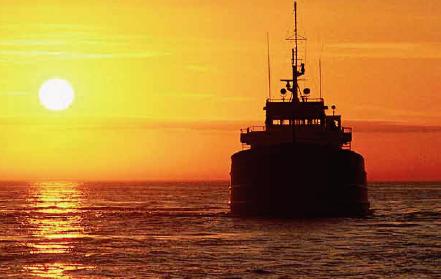
Rob Harris talks to Severn Trent De Nora, a leading provider of innovative water disinfection systems to the marine and offshore industries.
Water is undoubtedly our most precious natural resource—we can’t live without it, yet only three percent of the world’s water resources are fit for human consumption and almost 97 percent are in the oceans.
As a result, protecting our waterways is an important part of being environmentally conscious, even if it attracts rather less publicity than climate change and reducing carbon footprint or greenhouse gas emissions. The International Maritime Organization (IMO), a specialized agency of the United Nations, exists to develop and maintain a comprehensive regulatory framework to reduce pollution and protect our global waterways.
As IMO regulations for marine sewage discharge and ballast water treatment become more stringent, Severn Trent De Nora is leading the charge to provide clean water, with a clear conscience. For more than thirty years, the company has been offering innovative electrochlorination disinfection treatment solutions for marine sewage and ballast water treatment.
At its facility in Sugar Land, Texas, Severn Trent De Nora manufactures marine and offshore industrial water disinfection products. “The hub of the oil and gas industry worldwide is in Houston, Texas,” explains director of operations Frank Martin. “Sugar Land is a suburb of Houston. We started here primarily to be close to the oil and gas industry.”
Severn Trent De Nora manufactures marine sewage treatment systems in sizes ranging from small complement systems for yachts, work boats and vessels up to large complement systems for offshore platforms and FPSOs. The company also manufactures electrochlorination disinfection systems ranging from small offshore installations to large power and desalination plants as well as ballast water treatment systems for oceangoing vessels.
Two of the premier products manufactured at the Sugar Land facility are the OMNIPURE™ marine sewage treatment system and the BALPURE® ballast water treatment system. Both products use the company’s proprietary electrochemical disinfection process. David Hill, the company’s engineering manager, explains the process. “Both of our products incorporate seawater electrochlorination to generate a chlorine equivalent disinfection solution onsite, using common and readily available materials,” he says. “Seawater, roughly 3 percent salt, is used with electricity to generate a sodium hypochlorite solution for disinfection purposes. In simplest terms, it’s bleach, but instead of it being 5 percent, as household bleach is, our products are down to one percent or less.”
BothOMNIPURE and BALPURE are designed to meet and exceed the current IMO regulations while offering treatment solutions that are safe to operate and maintain. Dana Casbeer, product line manager for the OMNIPURE sewage treatment system, explains. “The OMNIPURE treatment system meets the stringent MEPC.159(55) regulations and can be custom built to fit anything from a stationary platform or rig to smaller passenger vessels and work boats. The system produces an effluent that is clean and clear, while presenting customers with a proven, safe method of handling solids.
“The solids we discharge from the OMNIPURE unit have been sanitized,” he continues. “They have been treated to a degree to where they are safer to handle than those from our competitors’ units. We differentiate ourselves by presenting our customers a treatment solution that treats solids meeting a Class B Sludge Rating,” he adds, “and that means it is a landfillable waste. Our solids can be incinerated onboard a ship; since there is no active biological mass we can retain them outside the system longer than someone who is taking the solids out of the raw sewage inlet stream. So we don’t have the same issues as far as odor, biological matter, or going septic.”
Maintaining the proper ballast can keep a ship stable in heavy seas. It is a necessary part of the function and balance of the ship. One of the most pressing environmental challenges facing the shipping industry today, however, is that marine life, in many different forms, is being carried around the world in ballast systems, disrupting local ecologies. The problem of contamination from non-indigenous species is producing major environmental changes in ecosystems around the world. As a result, international, national, state and local environmental agencies worldwide are taking action to regulate the discharge of ballast water arriving in ships coming from overseas ports.
Severn Trent De Nora’s BALPURE ballast treatment system delivers tomorrow’s performance standards today, as Bill Burroughs, product line manager for BALPURE, explains. “The fear is that a ballast water system can actually transport the organism,” he says. “You essentially have the opportunity to set up a salt water aquarium in your ballast tank. In San Francisco harbor, for example, there are no indigenous species left. Non-indigenous species have out-competed all the others.”
The BALPURE system safely and effectively eliminates all biological organisms from the ballast system on a ship, meeting all SOLAS regulations (Safety of Life at Sea). “In California, for example, they have a zero tolerance policy that means you can’t discharge any viable organism,” adds David Hill. “The BALPURE ballast water treatment system meets that requirement.”
The future of regulations is difficult to predict exactly, but there can be little doubt that they will tighten, rather than relax. Severn Trent De Nora is ready to meet the needs of its customers, whatever they might be. “From a global perspective,” concludes Frank Martin, “we can react very quickly to any specification or demand that might arise.”













